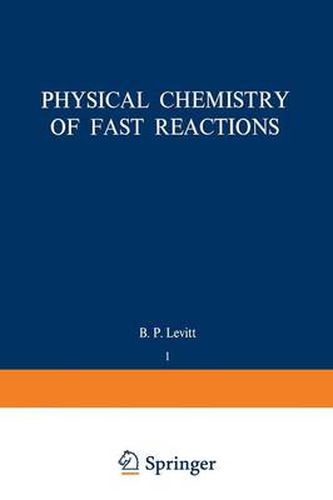Readings Newsletter
Become a Readings Member to make your shopping experience even easier.
Sign in or sign up for free!
You’re not far away from qualifying for FREE standard shipping within Australia
You’ve qualified for FREE standard shipping within Australia
The cart is loading…






This title is printed to order. This book may have been self-published. If so, we cannot guarantee the quality of the content. In the main most books will have gone through the editing process however some may not. We therefore suggest that you be aware of this before ordering this book. If in doubt check either the author or publisher’s details as we are unable to accept any returns unless they are faulty. Please contact us if you have any questions.
The chapters in this book are devoted to the elementary reactions of small molecules in the gas phase, with some emphasis on reactions important in combustion. The first three chapters cover experimental measurements made at high temperatures, mainly using shock waves and flames; the final chapter describes discharge flow methods near room temperature. The authors-all active in the fields they describe were asked to aim at a level intermediate between a textbook and a review, designed for readers not already familiar with this branch of chemical kinetics. We hope the book will prove especially useful to research workers in related subjects, to research students, and perhaps as source material for the preparation of lectures. The examples have been chosen to illustrate the theoretical basis of the topics rather than attempt a complete coverage. Professors Wagner and Troe describe the remarkable progress made in recent years in measuring dissociation rates for small molecules. Tests ofunimolecular reaction theories are usually made in the ‘fall-off’ region of pressure: the kinetics change from first order to second order as the pressure is reduced. For large molecules this region lies below atmospheric pressure and is relatively easily accessible. For molecules with four or less atoms, however, the fall-off region lies well above atmospheric pressure: it has been explored using the high pressure shock tube techniques developed by the authors.
$9.00 standard shipping within Australia
FREE standard shipping within Australia for orders over $100.00
Express & International shipping calculated at checkout
This title is printed to order. This book may have been self-published. If so, we cannot guarantee the quality of the content. In the main most books will have gone through the editing process however some may not. We therefore suggest that you be aware of this before ordering this book. If in doubt check either the author or publisher’s details as we are unable to accept any returns unless they are faulty. Please contact us if you have any questions.
The chapters in this book are devoted to the elementary reactions of small molecules in the gas phase, with some emphasis on reactions important in combustion. The first three chapters cover experimental measurements made at high temperatures, mainly using shock waves and flames; the final chapter describes discharge flow methods near room temperature. The authors-all active in the fields they describe were asked to aim at a level intermediate between a textbook and a review, designed for readers not already familiar with this branch of chemical kinetics. We hope the book will prove especially useful to research workers in related subjects, to research students, and perhaps as source material for the preparation of lectures. The examples have been chosen to illustrate the theoretical basis of the topics rather than attempt a complete coverage. Professors Wagner and Troe describe the remarkable progress made in recent years in measuring dissociation rates for small molecules. Tests ofunimolecular reaction theories are usually made in the ‘fall-off’ region of pressure: the kinetics change from first order to second order as the pressure is reduced. For large molecules this region lies below atmospheric pressure and is relatively easily accessible. For molecules with four or less atoms, however, the fall-off region lies well above atmospheric pressure: it has been explored using the high pressure shock tube techniques developed by the authors.